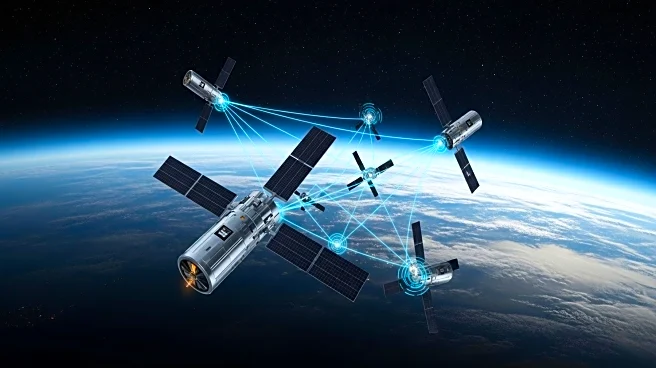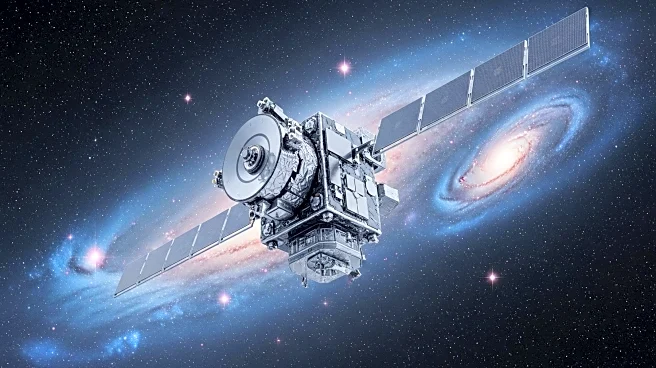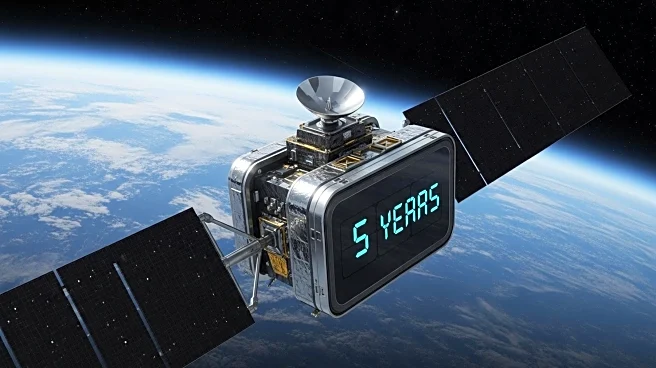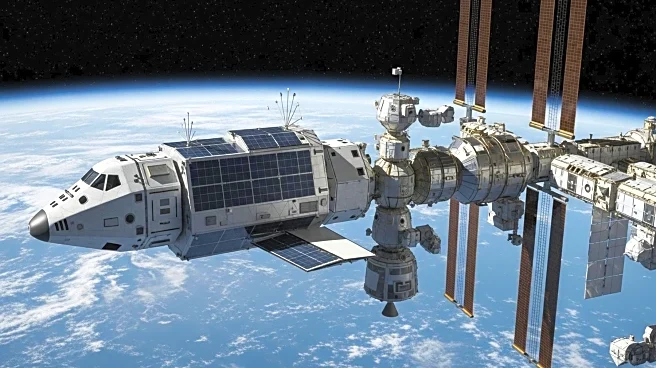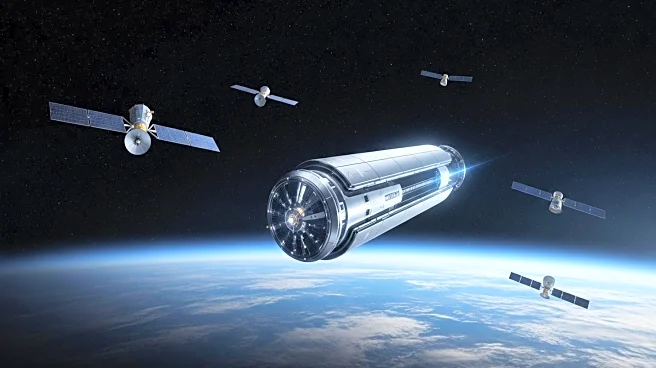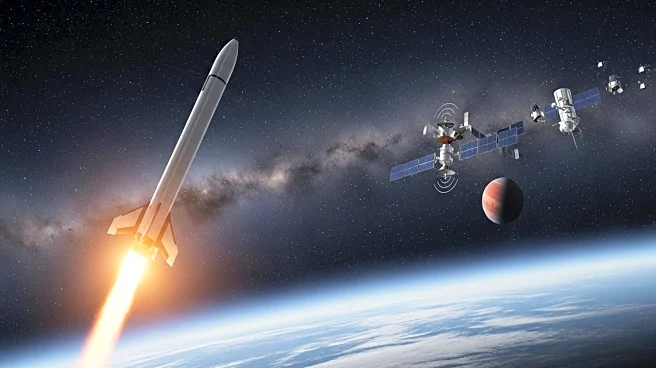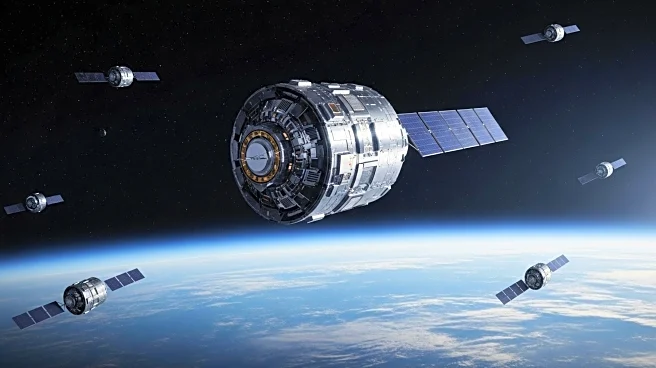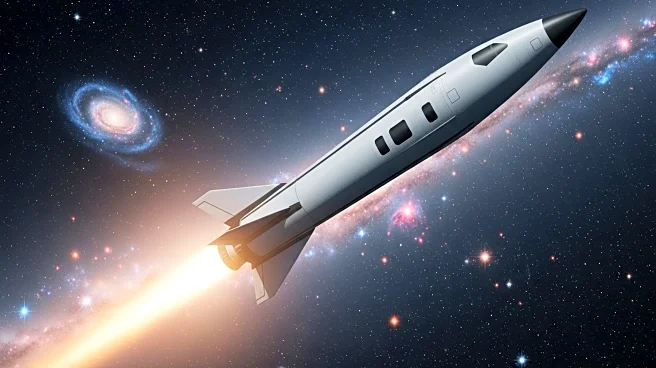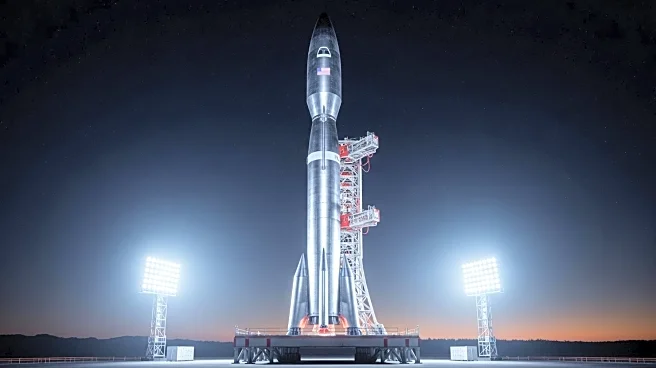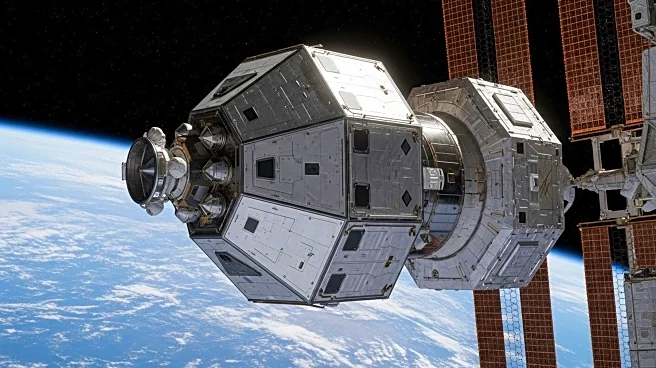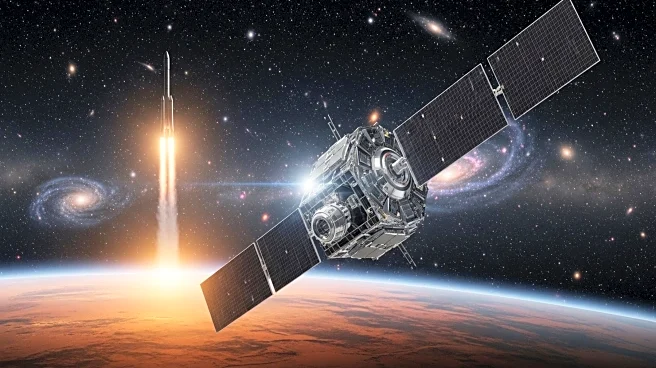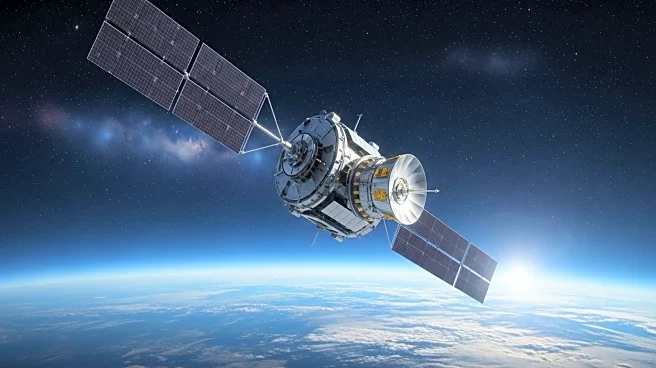What is the story about?
What's Happening?
SpaceX successfully launched 24 Starlink internet satellites into orbit from Vandenberg Space Force Base in California. The launch took place on September 19, 2025, at 12:31 p.m. EDT. The Falcon 9 rocket, topped with the satellites, lifted off and completed its mission with the first stage returning to Earth, landing on the SpaceX drone ship 'Of Course I Still Love You' in the Pacific Ocean. This marks the 10th launch and landing for the booster designated B1088. The upper stage of the Falcon 9 continued to carry the satellites to low Earth orbit, where they are expected to be deployed approximately 62 minutes after liftoff. This launch contributes to the already extensive Starlink network, which consists of nearly 8,400 active satellites, making it the largest constellation of spacecraft ever assembled.
Why It's Important?
The expansion of the Starlink satellite network is significant for global internet connectivity, particularly in remote and underserved areas. By increasing the number of satellites, SpaceX aims to enhance the coverage and reliability of its internet service, potentially reducing the digital divide. This development is crucial for industries relying on internet access for operations, including education, healthcare, and business sectors. Additionally, the successful reuse of the Falcon 9 booster demonstrates SpaceX's commitment to cost-effective and sustainable space exploration, which could influence future commercial space endeavors.
What's Next?
SpaceX is likely to continue its frequent Starlink launches, as evidenced by the fact that over 70% of Falcon 9 missions in 2025 have been dedicated to this project. The company may focus on further expanding its satellite network to improve service quality and reach. Stakeholders, including governments and telecommunications companies, may respond by exploring partnerships or regulatory measures to integrate satellite internet into existing infrastructure. The ongoing development of Starlink could also prompt competitors to accelerate their own satellite internet initiatives.
Beyond the Headlines
The rapid expansion of satellite internet raises questions about space traffic management and the long-term sustainability of satellite constellations. As the number of satellites increases, concerns about space debris and collision risks become more pressing. Regulatory bodies may need to address these issues to ensure safe and responsible use of space. Additionally, the widespread availability of satellite internet could have cultural implications, potentially altering communication patterns and access to information globally.
AI Generated Content
Do you find this article useful?
